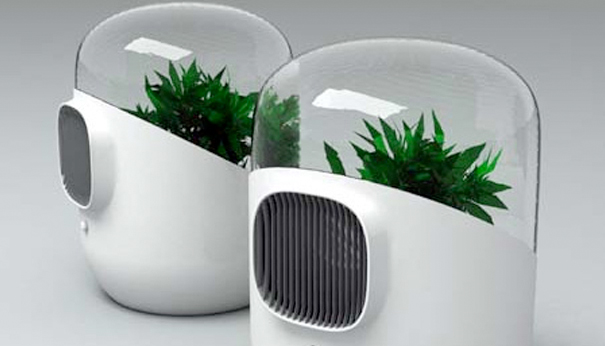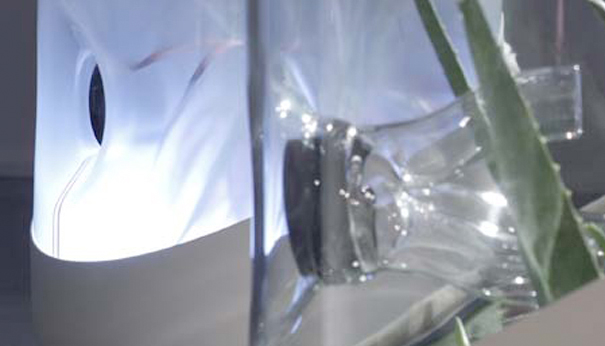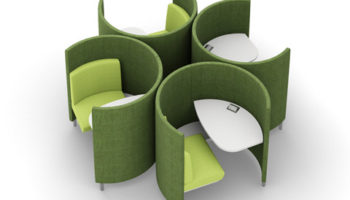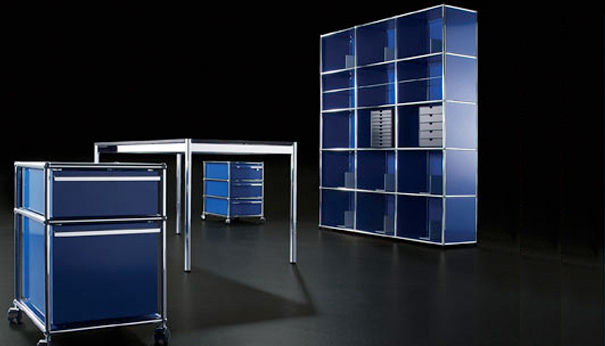Bel-Air: A Domestic Spacecraft
“In a sense, it renders plants ‘more intelligent’.” Referred to as a mobile mini green-house or living filter, Bel-Air “absorbs and metabolizes noxious chemicals and particles from the air that circulates in our homes,” according to Le Laboratoire. It is the product of a newfound relationship between design and science, more specifically that of Parisian industrial designer Mathieu Lehanneur and Harvard scientist David Edwards.
Bel-Air. Designed by Mathieu Lehanneur and David Edwards.
The air purifier continuously inhales polluted air, forcing it through three natural filters (the plant leaves, its roots, and a humid bath) prior to releasing it back into the space, purified. Lehanneur was inspired by Edward’s integrated art-science approach, evident in his experimental collaborative art-science centre in Paris. Together, the two conceptualized this clever, off-the rack air filter known as Bel-Air. The base of the project was NASA’s research into air-purifying systems and the efficiency of plants at absorbing and eliminating pollutants in aircraft. Using some of the species NASA had determined to be most effective at capturing toxic compounds (including spider plants), they “created a new form of air filter which passes dirty air past absorptive surfaces of plants, thereby improving the capacity of plants to absorb noxious gases and particles.” According to its designers, the mobile mini greenhouse, conceived for domestic use, is ideal for “anywhere you want to breathe easy,” from the bedroom to the living room, office or kitchen. Even in a dark space, Bel-Air can effectively improve your air quality. Its white LED lights, which work on AC power, enable the plants to thrive anywhere. Lehanneur describes the end product as a domestic spacecraft.


Designers are problem solvers. Bel-Air expands Lehanneur’s design vocabulary, enabling his problem-solving capabilities to tackle serious science-related issues. Currently available with a high price tag through Le Laboratoiore, Bel-Air is unlikely to become a household item in the very near future. This sustainable technology brings to mind Rainbow Solar’s photovoltaic glass window, previously featured on 3Rings. Both products are conceptually innovative and provide serious implications for future development, despite the fact that it is unlikely they will reach a wide audience today.
Bel-Air was debuted at in 2008 at MoMA in New York during the exhibition Design and the Elastic Mind, alongside a diverse range of products including Tómas Gabzdil Libertiny’s Honeycomb Vase. It won the prestigious Innovation of the Year Award from Popular Science magazine in 2008.




Leave a Reply